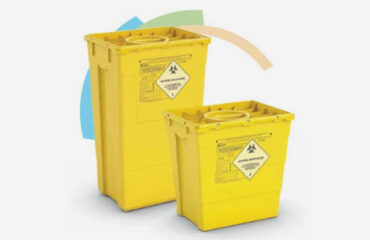The Basic Principles Of Reclaim Waste
The Basic Principles Of Reclaim Waste
Blog Article
Things about Reclaim Waste
Table of ContentsThe Definitive Guide to Reclaim WasteHow Reclaim Waste can Save You Time, Stress, and Money.8 Simple Techniques For Reclaim WasteThe 8-Minute Rule for Reclaim WasteThe 30-Second Trick For Reclaim Waste
Check out the types, events, and forms of liquid waste. Domestic sewer waste refers to the waste and products from a household sewage-disposal tank. This kind of waste is produced by human beings in residences, colleges, and various other structures. This only includes septic systems that have a drainpipe field. The appropriate management and disposal of residential sewage waste call for liquid waste to be moved to a sewage therapy plant where the proper techniques and equipment are used to purify and deal with waste.
Business waste commonly consists of prospective risks, such as flammable materials or a mix of fluid and strong waste items, and calls for an advanced and thorough disposal process. The disposal of business waste usually involves the filtering of waste prior to transport to make sure secure and proper disposal. Industrial waste is developed from byproducts and overflow of commercial procedures and manufacturing.
This type of waste can not make use of the same sewer monitoring transportation or procedures as septic or commercial liquids. The hazardous waste monitoring process needs the evaluation and testing of fluid waste prior to it undergoes the disposal process (industrial wastewater treatment). Overflow waste is the fluid waste that comes from runoff and excess stormwater in extremely inhabited areas or cities
Runoff waste can cause contamination and flooding if not handled properly. Guaranteeing appropriate waste monitoring can avoid calamities and minimize environmental injury.
Some Known Questions About Reclaim Waste.
Call PROS Providers today to find out about our waste monitoring and disposal solutions and the proper ways to care for the liquid waste you generate.
(https://medium.com/@leonaube33101/about)This so-called 'wastewater' is not just a vital resource but, after therapy, will be launched to our land, rivers or the sea. Made use of water from bathrooms, showers, baths, kitchen sinks, washings and commercial procedures is known as wastewater.

water made use of to cool down machinery or tidy plant and equipment). Stormwater, a kind of wastewater, is drainage that streams from agricultural and metropolitan areas such as roofing systems, parks, yards, roads, courses and rain gutters into stormwater drains, after rain. Stormwater flows neglected straight to local creeks or rivers, eventually reaching the sea.
The Best Strategy To Use For Reclaim Waste
In Queensland, most wastewater is dealt with at sewer treatment plants. Wastewater is carried from domestic or commercial websites via a system of sewers and pump terminals, called sewage reticulation, to a sewage treatment plant. Local governments construct, keep and run most sewer therapy plants. Operators are licensed under the Environmental Protection Act 1994 to discharge cured wastewater at an appropriate ecological requirement into waterways.
The Department of Natural Resources suggests regional federal governments concerning handling, operating and keeping sewerage systems and treatment plants. In unsewered locations, regional governments might call for householders to set up private or house sewage therapy systems to click this site deal with domestic wastewater from commodes, cooking areas, bathrooms and washings. The Department of Natural Resources authorises making use of household systems when they are shown to be efficient.
Many stormwater receives no therapy. In some brand-new communities, therapy of some stormwater to eliminate trash, sand and gravel has actually started making use of gross pollutant traps. Wastewater therapy takes place in 4 phases: Eliminates strong matter. Larger solids, such as plastics and various other things incorrectly discharged to drains, are removed when wastewater is travelled through displays.
Wastewater after that moves into large tanks where solids clear up and are removed as sludge. Grease and scum are skimmed from the surface area. Utilizes little living organisms knows as micro-organisms to break down and remove continuing to be liquified wastes and fine fragments. Micro-organisms and wastes are integrated in the sludge. Gets rid of nitrogen and phosphorus nutrients that could trigger algal blooms in our waterways and intimidate aquatic life.
Reclaim Waste for Dummies
Nutrient removal is not offered at all sewer therapy plants since it requires pricey specialist devices. It is becoming much more usual in Queensland. Clear liquid effluent generated after treatment may still consist of disease-causing micro-organisms. If this effluent is released right into waterways such as rivers or the sea, the micro-organisms will ultimately die out.

Most wastewater streams right into the sewerage system. Under the Act, neighborhood federal governments carry out approvals and permits for ecologically relevant tasks (Ages) including wastewater releases that could have a regional impact.
Facts About Reclaim Waste Uncovered
Or else, samples are taken for lab evaluation. Frequently lots of examinations are needed to develop the levels of each of the various pollutants such as oils, heavy steels and pesticides in water. Surveillance provides valid information regarding water top quality and can validate that licence conditions are being satisfied. The details acquired via monitoring offers the basis for making water top quality decisions.
Report this page